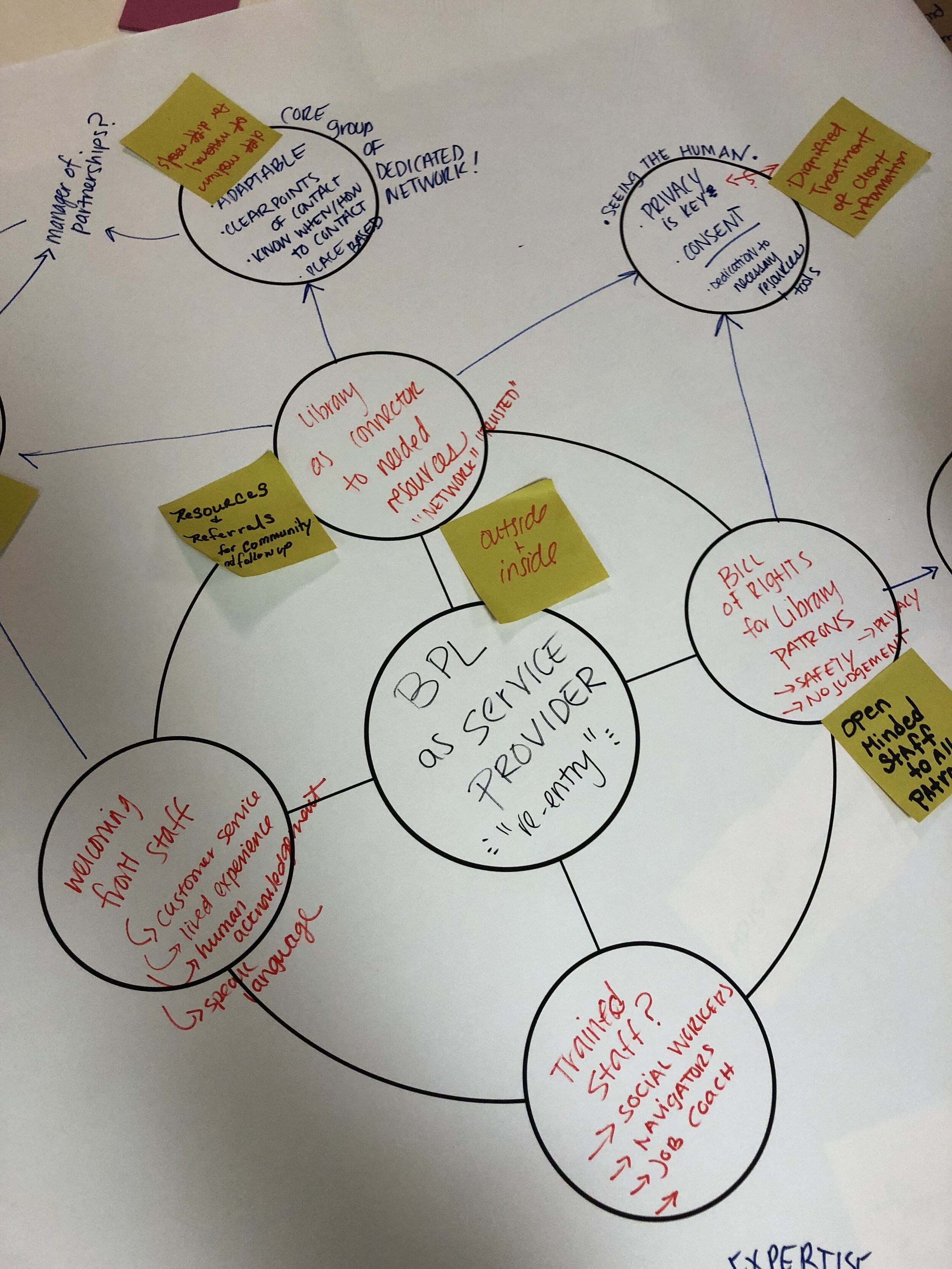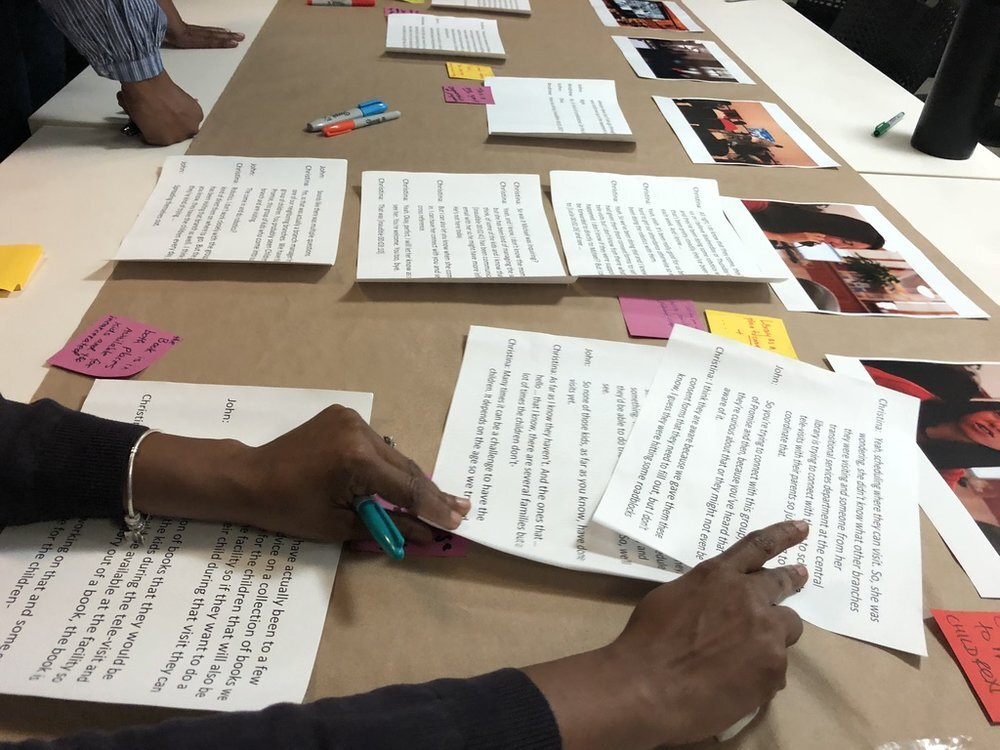Why design public services?
A person’s first experience with a government service, whether it’s their voting booth or bridge, is critical to whether they decide to continue to interact with it. The quality of the service itself is an opportunity to establish trust, or lose it.
This applies as much to governments and public service providers as it does to the private sector. Attention to the design of public services offers unprecedented ways to evolve and improve them and helps the public service provider to remain relevant and credible to those they serve.
Case Study: Rethinking Brooklyn Public Libraries Service Offerings
As the social role of libraries expands, Brooklyn Public Library (BPL), in partnership with The New School’s Parsons DESIS Lab, has been exploring ways to enhance their current services and to develop new strategies and services for the reentry population.
Through the Transdisciplinary Design Studio, I was given the opportunity to join their partnership and jointly with my team — Alyssa Kropp, David Baum, Heer Mehta, Lauren Suiter, Paula Kawakami — to explore potential design interventions that would offer BPL new opportunities reaching communities having had personal experience with the criminal justice system. What follows is a brief reflection of our process, the approaches, and tools we used and lessons learned from our engagement in this partnership:
01.
Research
We started out with the initial hypothesis that libraries have emerged as institutions with more expanded social roles than they are traditionally given credit for providing the framework for our design-led research over the next few months. In this time, we conducted interviews, done mapping exercises, learned about the roots and the current state of the prison system worldwide — with a particular focus on the United States. We conducted all of this research to better understand the needs of affected communities, identify crucial potential intervention points, and evaluate further opportunities for BPL in supporting people with experience with the justice system.
02.
Workshop & Insights
We concluded our intensive phase of research with a participatory design workshop held at the Bedford branch in Brooklyn to which a broad set of stakeholders were invited, including patrons, BPL staff, civil society members and city government representative.
Our studio divided up the participants into four groups, ones that were informed by our research up to this point: Organizational Culture, Referral System, Re-Entry, and Perceptions of the Library.
In our groups, we used a variety of methods, such as a card sort, intending to prompt discussions about BPL’s current organizational culture and futuring exercises like the futures wheel to inform our synthesis process. After the workshop the group reconvened as a whole, analyzed collective insights and was able to identify the following areas of opportunity prior to moving into our ideation phase:



03.
Concepts & Artifacts
Several ideation sessions finally led us to the proposal and development of two prototypes.
1. Bill of rights to ensure the first touchpoint by a patron with the Brooklyn Public Library is an empowering moment, we designed a Bill of Rights for BPL patrons.
2. Making outreach services visible through our research, we identified the computer area inside the library and the outside surrounding areas of the Bedford branch as two touchpoints to reach potential patrons that might benefit from the libraries outreach services but are currently unaware of them.
With this in mind, we developed a prototype (above) consisting of:
· A wireframe for a landing page proposing for the temporary redesign of the home site to highlight relevant local outreach services of the library. If someone clicks on one of the main buttons, they will be redirected to the respective section of the libraries main website.
· A Wi-Fi pop-up page: similar to the page described above, we are in the process of designing a pop-up page — popping up when someone logs on to the Wi-Fi — that highlights the outreach services offered by the library hoping to reach those connecting to the free Wi-Fi in the surrounding areas increasing their awareness about the services provided by the library.
04.
Prototyping & Testing
We brought the bill of rights to the Bedford Library branch to get some initial feedback from patrons and staff. Patrons and staff members that we had an opportunity to engage with affirmed the rights we had drafted and provided additional ideas for services the library could provide. This pointed to a future opportunity to incorporate a feedback mechanism into where the Bill of Rights is displayed within libraries.
Additionally, we believe the framework of the bill of rights could extend into the physical space of the library as well and become an integral part of the library’s branding. The language of each right could be present in the physical areas to demonstrate a dedication to the fulfillment of each right.


